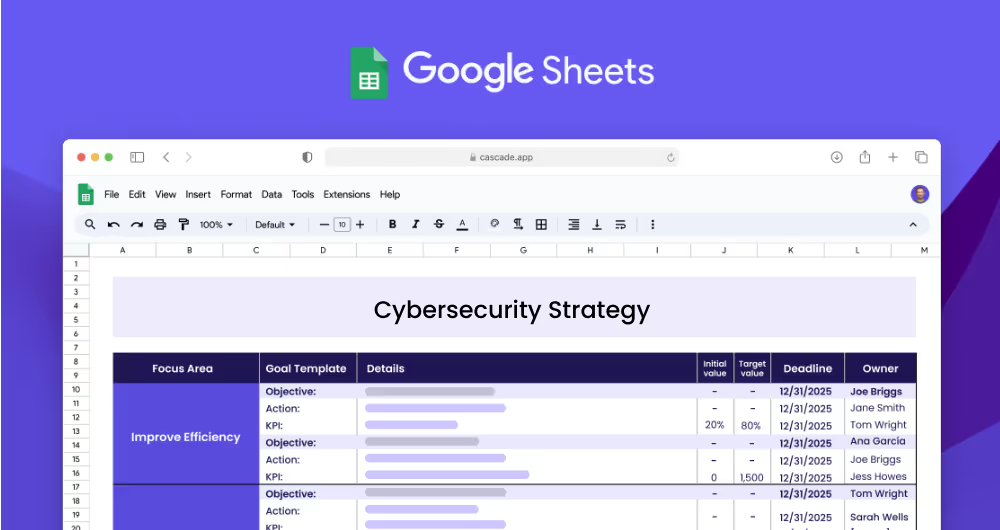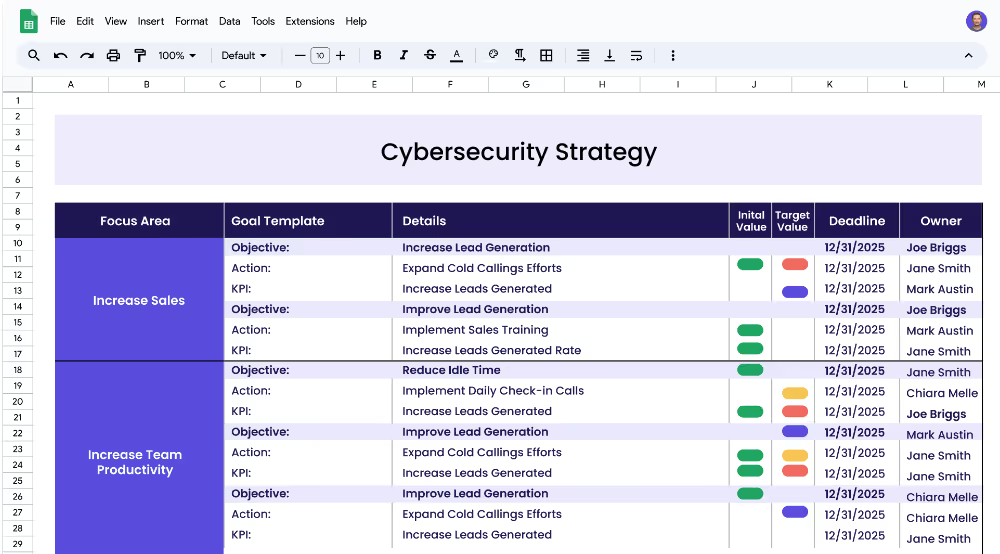A cybersecurity strategy is a plan of action that outlines the policies, processes and tools needed to protect the organization from cyber threats. It is designed to reduce the risk of a successful cyber attack, as well as minimize the damage caused by a successful attack. The strategy should be tailored to the organization's specific needs and risks, and should be reviewed on a regular basis.
Each focus area has its own objectives, projects, and KPIs to ensure that the strategy is comprehensive and effective.
This Cybersecurity Strategy template is designed to help IT professionals and teams create a comprehensive cybersecurity strategy for their organizations. It provides an easy-to-follow step-by-step process for creating a cybersecurity strategy that is tailored to the organization's specific needs and risks.
The first step in creating a cybersecurity strategy is to define the focus areas. A focus area is a broad category that identifies the areas of your organization that need to be addressed in order to reduce the risk of a successful cyber attack. Examples of focus areas can include enhancing cybersecurity, protecting data assets, and strengthening network security.
Once the focus areas have been identified, the next step is to think about the objectives that could fall under each focus area. Objectives are specific goals that need to be achieved in order to reduce the risk of a successful cyber attack. For example, under the focus area of enhancing cybersecurity, objectives could include implementing cybersecurity measures and enhancing end-user awareness.
After the objectives have been identified, the next step is to set measurable targets, or Key Performance Indicators (KPIs), to tackle each objective. KPIs are measurable targets that can be used to measure progress towards the objectives.
An example of a KPI for the focus area of Enhance Cybersecurity could be: Increase adoption of security policy from 0 to 100%.
Once the KPIs have been set, the next step is to implement the related projects that are needed to achieve the KPIs. Projects, also known as actions, are specific steps that need to be taken in order to achieve the KPIs. For example, under the KPI of increasing the adoption of the security policy from 0 to 100%, a project could be to develop a comprehensive security policy.
An example of a project related to Enhance Cybersecurity could be: Develop a comprehensive security policy.
If you’re looking to supercharge your cybersecurity efforts and minimize risks more efficiently, Cascade Strategy Execution Software offers a robust alternative to traditional spreadsheets. With our integrated platform, you can plan, track, and optimize your cybersecurity strategy dynamically and in real-time. Sign-up for free or book a demo with one of our strategy experts to discover how you can enhance your security measures with Cascade!


